There is quite a lot of technical language surrounding phonics that sometimes can be a barrier to parents and even some teachers understanding how to teach it. The aim of this article is to completely demystify one of the most common words you may hear bandied around when you hear people talk about phonics – ‘phonemes’.
So in real talk, what exactly is a phoneme?
A phoneme is the smallest unit of sound in a language. For example, the word ‘dog’ is made up of three phonemes – ‘d’, ‘o’, and ‘g’. These are not the written letters but the spoken sounds. So, for example, the word ‘chain’, although made up of five letters, only contains three phonemes – ‘ch’, ‘ai’ and ‘n’.
There is debate in education whether words like ‘phoneme’ are really useful in that they can add an element of mystery to what is really quite a straight forward process – the teaching of phonics.
I will look at how to see through this mystique, and in particular look at what phonemes are, how to teach them, what phonemes exist in English, how you can help at home, and what do you do with them when you know them.
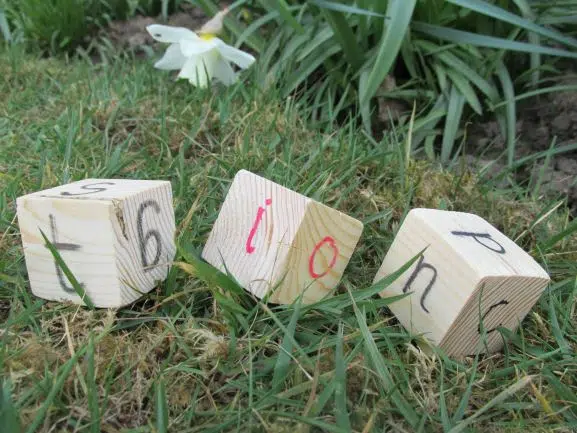
What Phonemes Are – Real Talk
I think when I went to primary school (in the 1980s), phonemes were called ‘sounds’. That is basically what they are.
We know that a letter has a name and also a sound. For example the letter ‘c’ has the letter name that is pronounced ‘see’. It also has a sound that we pronounce ‘c’. The sound is the phoneme- it is that simple.
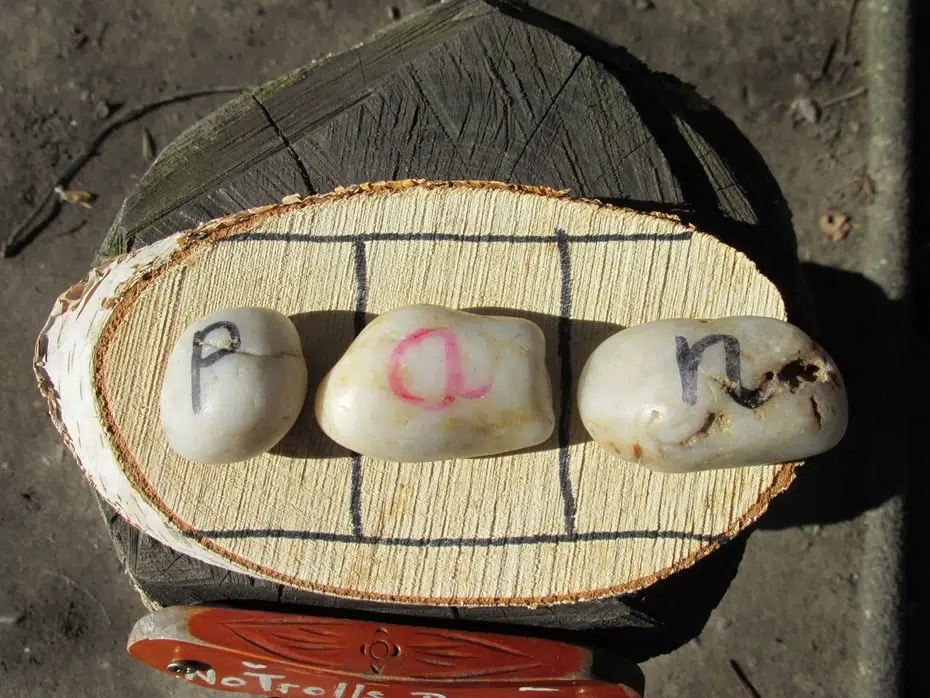
You might ask then why do educators not just call them sounds?
This is a good question. Many people in education do just call them this, as it is far easier for parents in particular to understand what they are.
The official reason they are called phonemes is that the word ‘sound’ has multiple meanings.
A ‘sound’ can be a cow mooing, or the noise of hammer hitting nails, or a telephone ringing. The word ‘phoneme’ is a more precise word that specifically is talking about the ‘sound’ of a unit of speech.
However, there are many people that think this is all a bit silly. Children quickly learn that many words in English have dual meanings. I don’t believe they get confused with the terminology ‘sounds’ one bit.
However, this is more a technical issue. Some schools will call these units of sound ‘phonemes’ so we might as well learn what they are!
What Phonemes Are There?
Children will learn 44 phonemes in phonics. These are often split up into different phases or groups, though this will depend on the country you live in.
There seems to be a bit of disagreement about what exactly the 44 phonemes are, but in general I think they are the following…
First, the phonemes represented by a single letter:
s, a, t, p
i, n, m, d
g, o, c
e, u, r
h, b, f, l
j, v, w, x
y, z
Then the phonemes containing two consonants (know as consonant digraphs):
qu, ch, sh, th, th, ng
Then there are the digraphs:
ai, ee, oa, oo, ar, or, ur, ow, oi, er
And finally the trigraphs (phonemes represented by three letters):
Igh, ear, air, ure
Here’s a good youtube video that explains what they are:
Many of the phonemes can be written in different ways. For example the phoneme ‘ai’ can also be written ‘ay’. This does not change the phoneme. It is just the ‘grapheme’ (ie. The letters used to represent it) that change.
Pure Sounds
One really important thing to consider when you are teaching phonemes is that it is best to use the ‘pure sound.’
For lots of parents, this may be different to the way that you were taught at school.
The big thing is to try to avoid putting a ‘uh’ sound at either the beginning of the phoneme or at the end. For example, ‘c’ should just sound like ‘c’, not ‘cuh’. ‘S’ should sound like ‘ssss’ not ‘suh’.
This is a great video to watch to learn a little bit more about this:
Some parents are resistant to this, because I think we definitely didn’t learn phonemes like this back in the day! I remember saying ‘cuh’, and ‘buh’ and all the rest of it.
However, it really does help children to blend and segment if they are saying the pure sounds. It is definitely worth the effort!
So Do You Teach Letter Names As Well?
All letters have a name but they also have a phoneme (sound.)
For example, the letter ‘t’ has a name that is pronounced ‘tee’. Also, it of course has the phoneme that sound like ‘t’.
There is a bit of debate about whether you should teach the letter names at the same time as the phonemes?
There is no right or wrong answer to this question.
I know some schools teach the letter names at the same time as the sounds/phonemes. For example, they might show a letter (e.g. t) and say ‘My name is ‘tee’ and my sound is ‘t’.
This way the children are introduced to both the written and verbal form at the same time.
However, I know many schools do not do this because they think it is too confusing for children to learn both straight away. The approach they take is to teach just the phonemes first. The letter names can then be taught at a later date, probably well after the children are confidently using the phonemes.
If you are a parent, I would recommend finding out what the school does, and following that process.
If you are a parent wanting to home-school your child, personally I would teach the phonemes first, and just throw the letter names in much later in the process.
Keeping it simple in the early days of phonics is crucial. It gets them going at a much quicker rate.
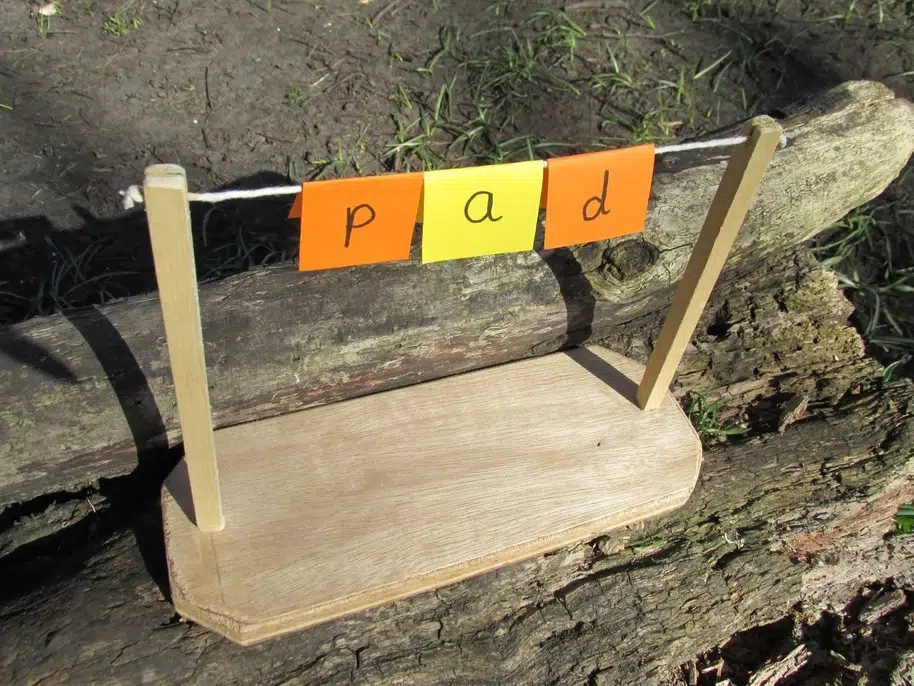
How Are Phonemes Taught?
There is no one set way to teach phonemes, but there are some very popular schemes around. These all have a similar approach to teaching them, if not identical.
Most schemes are based around the idea that you teach a phoneme along with an action.
For example, in one scheme, the phoneme ‘p’ is taught alongside the action of putting your index finger to your lips and going ‘p,p,p’ onto it, as though you are blowing out a candle.
These actions are really beneficial in helping children learn phonemes quickly. It makes it a multi-sensory experience. Children are using different senses at the same time and this really helps them keep the phonemes in their minds.
An example of a way phonemes are taught in school could look something like the following:
- Tell a simple story that links to the action you are about to teach. For example, if you will teach ‘p’ then tell a story about a party with a birthday cake.
- Include some words in the story that start with the sound. For example, in the example of the birthday, good words to include would be ‘party’, ‘pink’, ‘pig’ and anything else like that. Let the children copy and have fun with these words by saying them and really emphasising the phoneme at the start of the word.
- All do the action whilst showing them the letter
- Have a go of sky-writing. This means all writing the letter in the air with your fingers.
- Practice using the learned phoneme in group phonics games or provision activities
All schools are different, but this is a simple formula for learning phonemes.
If you are a parent, it is a good idea to find out how your school teaches phonemes so you are doing a similar thing.
Learning Orally – Before Letters
The big thing about phonemes is that it is sound. And we are all learning to listen to sound from the moment we are born.
Children aged 0 to 4 are all learning to hear and say phonemes, and so the vast majority of learning in this area takes place before you ever actually get round to learning the letters and sounds.
In particular, before children learn letter-sounds it is good if they can:
- Say most sounds verbally correctly
- Are able to listen for at least a short period of time
- Are able to join with simple listening games
- Are able to hear some sounds in easy games involving alliteration and rhythm
- Are able to hear and differentiate the different sounds that instruments make
- Have an understanding of low/high, loud/quiet, and other ways sounds can be changed
There are hundreds of good games you can try that develop skills in these key areas. Some fantastic ones you can try include:
- 17 Spectacular Segmenting Activities You’ve Got To Try
- Rhythm Sticks Games – The Essential Guide
- Alliteration Games – Ten Terrific Ones To Try
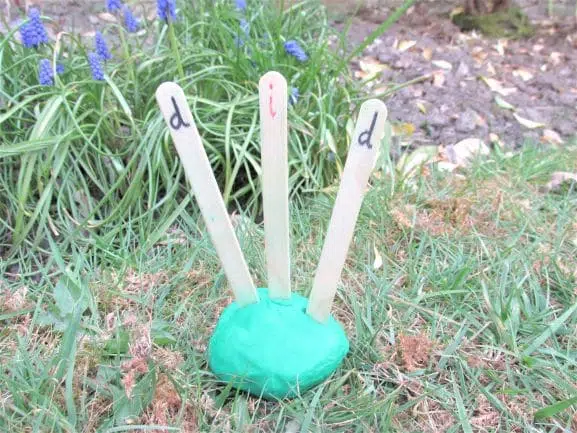
What Do You Do With The Phonemes You Learn?
The big thing about learning phonemes is that there is not much point in learning them unless you know how to blend and segment (or are at least beginning to do this.)
What Is Blending?
Blending is arguably the crucial skill of early reading. Simply put, blending is merging the sound you hear into words.
For example, if you hear ‘d-o-g’ you merge the phonemes together in your mind to make the word ‘dog’. To find out the full guide on what blending is then check out this article.
This is often the biggest stumbling block in early reading. There are lots of children that will learn many phonemes (sometimes all 44) but will not be able to use them.
Learning how to blend is therefore is key.
Good Games For Blending
1.Use A Puppet
I would say this is definitely the number one way to start.
Select any kind of puppet – it could be a finger puppet, a big puppet, or just a teddy. I like to use this monkey puppet…

The puppet basically makes up a story, but one word of every sentence it splits into sound talk.
For example, it might say, ‘Today I went for a walk with Cath the c-a-t.’ The children try to guess the sound talk word – e.g. ‘cat’. Keep going making up a story and splitting the words up. This really helps add context to the process, and gives them a clue.
2.Dress The Baby
Lots of children are very excited by babies, and this game is brilliant for them.
Have a baby, and some simple clothes to put on the baby – for example a ‘sock’, a ‘hat’, and a ‘boot.’

Say to a child, can you put on the ‘h-a-t.’ See if they can put the right piece of clothing on the baby.
What segmenting Is
The other core skill required when you know some phonemes is segmenting. This is the crucial skill for
If you want to find out in full what segmenting is then check this out. However, here is the short version…
Segmenting is splitting words up into their phonemes. For example, the word ‘pig’ can be split up into the phonemes ‘p-i-g’.
To be able to write words children will need to first sound them out using this process. But how do you teach it?
Good Games For Segmenting
1.Use A Robot
This is the classic way of teaching it, and it definitely works!
Get some kind of robot. It could be a simple box with a face drawn on! Or a robot toy, or puppet. I like to use this one:
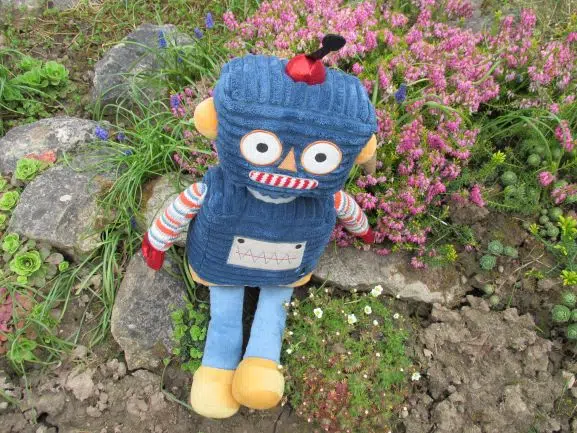
The idea is to use your arms like ‘robot arms’. Bend them at ninety degrees at the elbow and move them up and down.
The robot gives you a word to say like a robot, for example ‘kid’. Children move their arms up and down and say ‘k-i-d. Kid! K-i-d. Kid!’ Always repeat each word a few times, probably three or four when you start off.
2. Dance Segmenting
This is really good fun. Put some kind of pumping disco tune on!
Do a simple dance move, something like arms up then arms down. Do this while segmenting a word, for example ‘c-o-t. Cot! C-o-t. Cot!…’
These are two really fun ways of learning how to segment, but if you want to find out a list of the full 16 ways of teaching segmenting then check this out.
Games Using Phonemes
When children know some phonemes there are lots of ways they can use them to start to build, write and read words. Some of the most common are:
1.Phoneme Frames
These are simple grids that you can use to help you build and write words. They are excellent for adding a visual structure to early word building.
You can make a simple phoneme frame using lots of different materials – for example, draw one on a whiteboard with permanent marker, paint one on a log, or just draw one on paper.
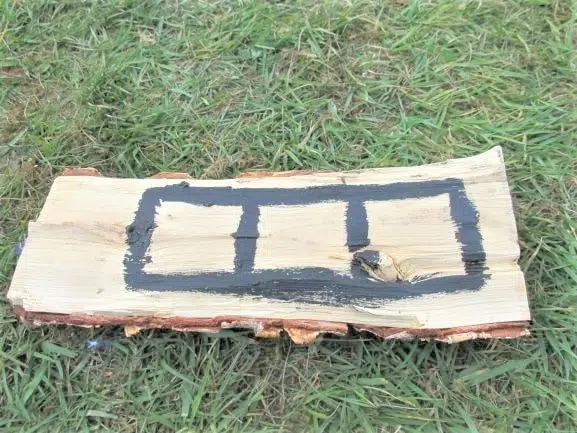
You can build words on it by using objects with letters on, for example shells, stones, magnetic letters, or bottle tops.
To find out more about what a phoneme frame is and how to use it, check this out.
2.Sound Buttons
These are basically circles that you draw under phonemes in a word.
The idea is that the child presses the button and says the phoneme. Then they blend the word.
3.Play-Based Games
There are lots of fun games you can play with different objects to bring the whole process of reading and writing words to life. For example:
- Peg sounds up on washing lines to build words
- Put letters on a train-track and drive the train over them
- Put letters on things like duplo or megablocks and try to build word
How You Can Help At Home With Phonemes
Any of the things I have highlighted here can be done just as easily at home.
In particular you want to focus on:
1.Find Out What Your School Do
All schools will probably follow pretty similar systems, but there will be some variations between settings. This is usually due to slightly different schemes used.
Try to find out what the school does, and stick to that system.
Many schools are keen to publicise their methods, and may offer parents meetings, or send out letters and information.
2. Complete Any Work The School Sets
Getting children started with phonics successfully will be one of the school’s top priorities, and often they will set some form of homework to help this process.
It is always best to do this rather than inventing your own.
If there is consistency between home and school then this is really motivating for children, and always the best solution.
3.Practise Phonemes
Regular practice of the phonemes children learn both at school and home will really help them. The more fluent children become, the easier the process of reading will be.
4. Practise Blending.
Blending really is the crucial step!
When children know a handful of phonemes, blending becomes the priority.
Try some of the games listed earlier, such as making up a story with a puppet.
5.Use Things Like Phoneme Frames
Using simple physical structures like phoneme frames really helps to get them confident at building words.
If you can use something like magnetic letters, or shells with sounds on, then these are great for creating words and beginning to read.
6.Point Out Sounds In Picture Books
Help children become aware of the phonemes they see around them.
Talk about letters on signs, posters, and wherever else you see them.
Point them out in books that they enjoy, and see if they can spot any letters they recognize.
Other Terminology You May Come Across In Phonics
Grapheme
A grapheme is the written form of the phoneme. It is basically how the sound is represented.
Many phonemes have graphemes of just one letter, such as ‘a, e, i, t’.
Other phonemes are represented by graphemes that contain two letters (e.g. ai, ee, oo), or three letters (e.g. igh, ear, air)
Digraph
This is a phoneme that is represented by two letters together. There are lots of these in English.
Some examples are ‘ai, or, oa, ee’ (though there are many more).
Trigraph
A trigraph is a phoneme that is represented by three letters. There are fewer trigraphs. Some examples are ‘igh, air, ear, ure’.
Top-Tips For Learning Phonemes
- Start when the children are ready
- Make it multi-sensory
- Have songs, rhymes, chants or actions for each phoneme
- Help them to hear the phoneme in words
- Get them blending and segmenting words, and using the phonemes they have learned
Conclusion
I hope all this real talk has helped you to learn exactly what a phoneme is, as well as how to teach it. It really is not rocket science!
When you understand just a few of the terms used in phonics, many people see that it really is not as complex as it first appears. Keep things simple, both for yourself and the children, and you will always find the best results.
